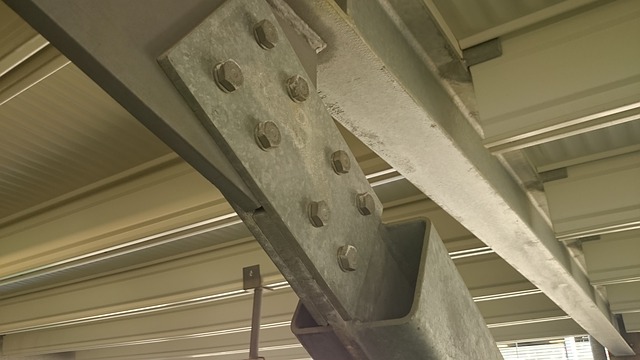Structural Steel Sizes And Weight: A Quick Guide

You might not realize it, but structural steel molds our society and impacts our daily life — especially in cities. This isn’t a new occurrence, which is likely why we think so little about it.
The first skyscraper was the Home Insurance Building in Chicago, as well as the first to use steel, rather than iron, brick, or stone for its skeleton.
From then on, structural steel sizes and weights became standardized and understood as a building material. This work has lasted for generations and continues even now. Want to see how 1884, the year this building went up, changed how we think about structural steel from then on? Keep reading to find out.
What Is Structural Steel?
Steel is a union of iron and carbon in a certain ratio to give it limited ductility as well as tensile strength. For hundreds of years, blacksmiths used steels of various grades in weapons and armor. It wasn’t until steel could be reliably mass-produced with the introduction of the Bessemer process that steel could be used in large projects.
But what sets structural steel apart from normal steel? There are a few points, but the main points consist of:
- Composition
- Geometry
- Sizes
There are a number of standard shapes and grades you’ll see structural steel used in. Many have further sub-standards such as:
- Wide flange
- Bearing pile
- American standard beam
There are some subtleties in these shapes that quickly show their differences. On the ground, though, the cross-section of each beam may not clearly be visible. It’s important to know then how each I-beam can be interpreted for minimum and maximum weight they can hold and min-max of the weight of the beam itself.
For example, the heaviest of the beam shapes would be the American standard beam, with a flange as wide as the wide flange. But the flange is also tapered to be thicker at the point it meets the vertical web. An American standard beam also tends to have a thicker web than a typical wide flange.
Similarly, a bearing pile has a thicker web than a wide flange, but usually equal flange thickness. Bearing piles are often used to support the wooden beams and flooring of homes above them.
Steel Composition and Geometry
Other types of standard structural steel shapes are channel, tee, hollow section or rectangular steel tube, angle, pipe, and plate or bars. In addition to this are many non-standard special shapes of structural steel.
The utilization of a “second moment of area” is a major geometric property that makes steel “structural.” The composition of these steels maintains that they bey a fine-gain and generally non-alloy nature. There are, however, many many standards for different applications.
The CE marking ensures that the steel meets European Commission standards. “A” marking such as A36 is part of the ASTM International standards. Not to be confused with Grade A, B, 5, or 8 bolts or hardware.
Structural steel hardware have their own grades such as A325 or A490 with matching nuts and washers. Though grade 8.8 bolts according to ASTM F568M are often considered equal to A325 bolts. The issue becomes hex head size —again coming back to “structural” geometrical dimensions.
As far as composition goes, there are structural steel designations for carbon steels, high-strength low alloy, forged, and quenched and tempered alloy. Carbon steels are definitely any range below 2% carbon as low as 0.3%.
High-strength steels have a variety of other metals and minerals to enhance their strength. A few of these are molybdenum, nitrogen, vanadium, nickel, and chromium. Usually, they also contain no more than 2% manganese.
Forged steels increase overall strength by molding them in a solid state using mechanical processes and thermal energy. This reorganizes the crystalline structure as well as removes gases and voids.
Structural Steel Sizes and Weights
Structural steel sizes and weights measurements are often not clear the first time you see them. When we usually will measure something by width and length, or height and width, structural steel is measured differently.
For a variety of shapes like s-shapes, channels, bearing piles, wide flanges, and others the letter indicates the shape. The number next to the letter tells us the height, and the second number tells us the weight per foot. For example, we can have a designation of W12X36. This means a wide flange of 12-inch height and 36 pounds per foot.
Tees are interesting because they have designations depending on if they were cut from a wide flange, American standard, or bearing pile I-beams.
Flanges can be three inches to nearly eight inches wide, and from just over a quarter-inch to over an inch in thickness. A typical range of web thickness goes from about a quarter-inch to about seven-tenths of an inch. The length of I-beams is usually between 20 and 60 feet.
You can see the weight increase quickly with a small change in size. Up to 106 lbs per foot on standard beams. Heavy structural beams can go much larger, from 10″ to 44″ flanges.
Pipes, Tubes, Plates, and Angles — Oh My
For pipes, tubes, angles, and plates, we have height, thickness, and width as our dimensions.
L2x2x0.5 gives us an angle of 2-inch height by 2-inch width, with a steel thickness of half an inch. If there are two numbers, it indicates there are unequal sides. For example, L6x3x0.5 is an angle with a 6-inch leg and a 3-inch leg. Because pipe comes as a circle, you’ll have one number given. However, it’s important to realize that when you get 4 STD pipe, the “4” refers to the NPS designation — not the inner or outer diameter. STD refers to the “schedule” of the pipe as “standard wall”.
There are also XS for extra strong, or XXS for double extra strong. This will affect the thickness of the wall of the pipe, and therefore the weight. This kind of specification belongs to an old system called IPS or iron pipe size. Unfortunately, pipe is an article for another day, since it’s so expansive a subject.
Steel plates work a little different as they give their thickness first, and the width and length next. The industry calls it bar or bar stock when they’re thinner and longer pieces.
Hollow steel section tubes commonly get called HSS tubes and are put to use in car chassis and other high-strength applications. For these shapes, you’ll need to ask your supplier’s advice on weight per foot, or a technical data sheet depending on the density and type of your steel.
Getting the Right Angle on Structural Steel
We admit that there’s a lot to know about structural steel. But hopefully, this quick guide has cleared a few things up for you. If not, we’ve got experts standing by ready to help with your structural steel sizes and weights.
Bushwick Metals has over a hundred years of service and experience dealing with structural steel. Not only do we source the highest quality structural steel products, but we also make sure to have it available to provide next-day delivery over a wide region of the Eastern US.
Get in touch with Bushwick Metals today for all your structural steel needs!






